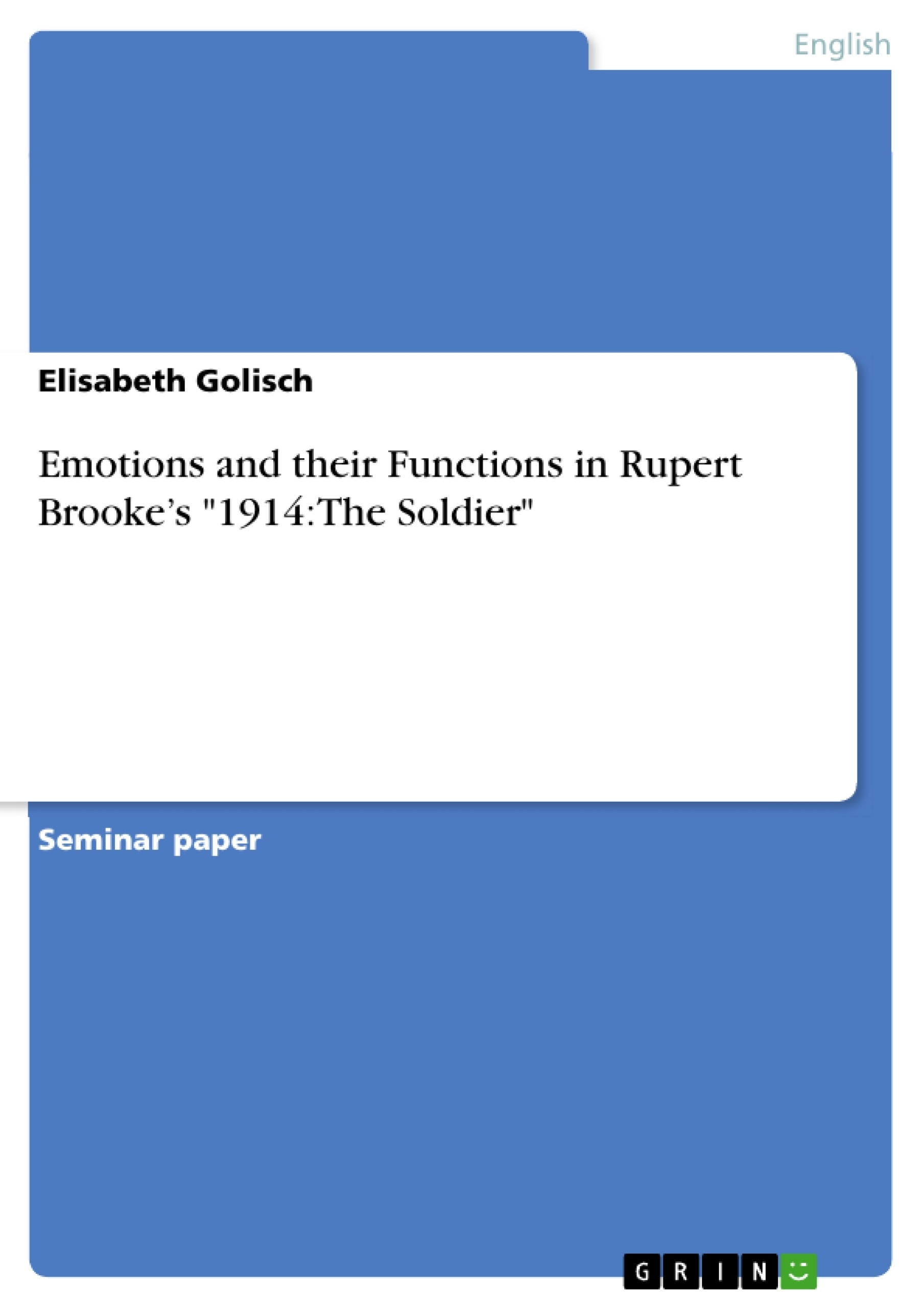This term paper deals with the poem “1914: The Soldier“ from Rupert Brooke, focusing on the transmitted emotions with their functions and the achieved effect.
The particular language and usage of several stylistic, as well as structural devices in a poem are not chosen by coincidence and in order to understand the included message, a detailed analysis of the poem will be provided in the following chapter (cf. 2.) as foundation for the following studies. The third chapter (cf. 3.) contains an extensive consideration of the emotions used in the poem and how they are transmitted to the reader. Furthermore, the effects of those emotions and the intended functions will be examined.
Due to the fact, that people are influenceable through rhetoric devices, the following thesis will be validated: The strong usage of positive and patriotic emotions is able to manipulate the reader, in order to present the terrible act of dying during a war as something desirable.
Table of Contents
- Introduction
- Structural and Semantic Analysis of "1904: The Soldier" by Rupert Brooke
- Emotions in "1914: The Solider" by Rupert Brooke
- Effects of transmitted Emotions in the Sonnet
- Functions of those transmitted Emotions
- Conclusion
Objectives and Key Themes
This term paper analyzes the poem "1914: The Soldier" by Rupert Brooke, focusing on the transmitted emotions with their functions and the achieved effect. It explores how the poem's structural and stylistic devices contribute to its meaning and how these elements, particularly the use of positive and patriotic emotions, influence the reader's perception of death in wartime.
- The role of structural features and stylistic devices in shaping the poem's meaning.
- The transmission of emotions in the sonnet and their impact on the reader.
- The functions of the emotions presented in the poem.
- The manipulation of the reader's perception of death in wartime through the use of positive and patriotic emotions.
- The connection between the poem's themes and Rupert Brooke's biography.
Chapter Summaries
The first chapter introduces the poem "1914: The Soldier" by Rupert Brooke and discusses the role of emotions in poetry. The second chapter examines the poem's structural features, such as its form as a sonnet and its rhyme scheme, as well as its stylistic devices, such as the use of first-person narrative. The third chapter delves into the emotions expressed in the poem and how these emotions are conveyed to the reader, exploring their effects and functions. This chapter will also consider how the poem's emotional content potentially influences the reader's perception of death in wartime.
Keywords
This term paper focuses on the themes of death, war, patriotism, emotion, and manipulation in Rupert Brooke's sonnet "1914: The Soldier." It examines the poem's structure, style, and emotional content to explore the way these elements work together to convey meaning and influence the reader's understanding of the text.
- Quote paper
- Elisabeth Golisch (Author), 2018, Emotions and their Functions in Rupert Brooke’s "1914: The Soldier", Munich, GRIN Verlag, https://www.grin.com/document/452484




